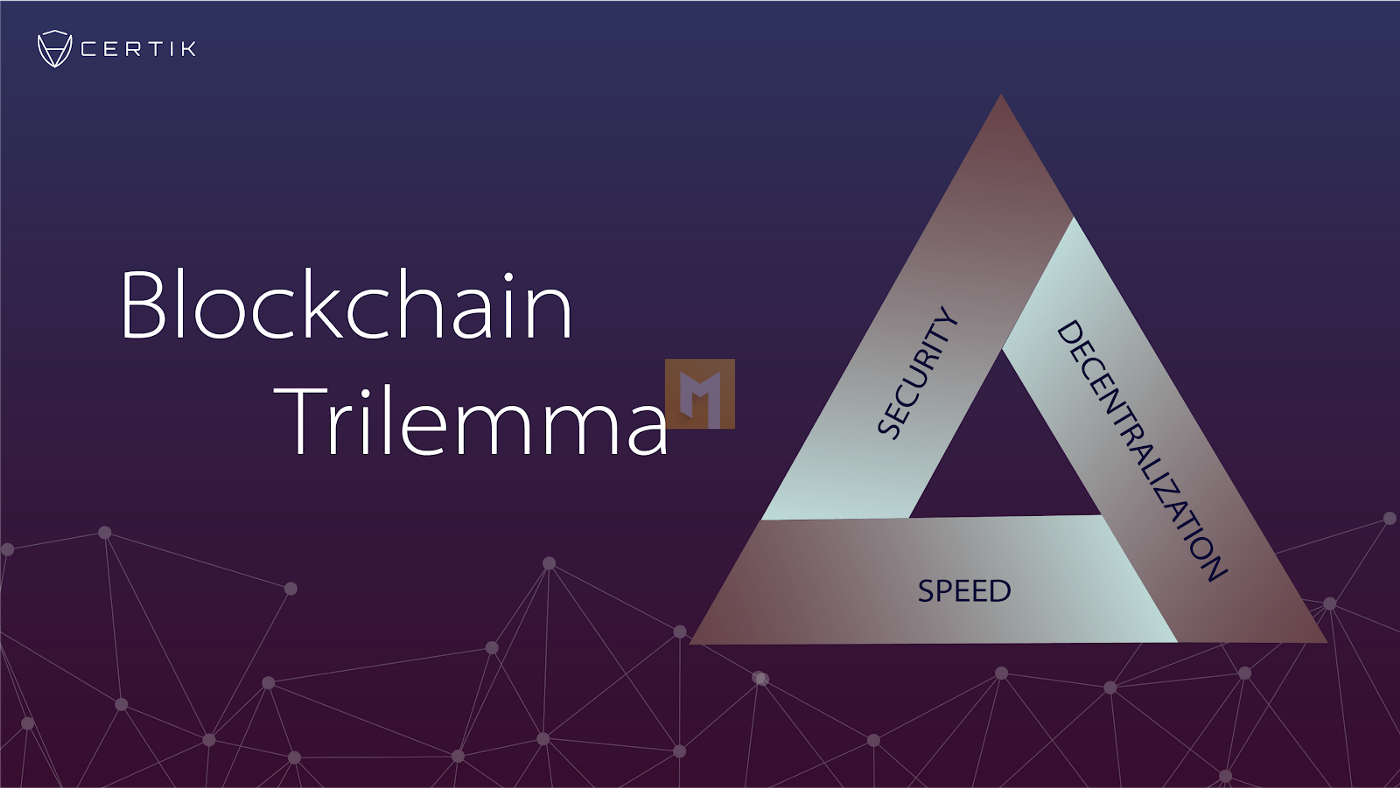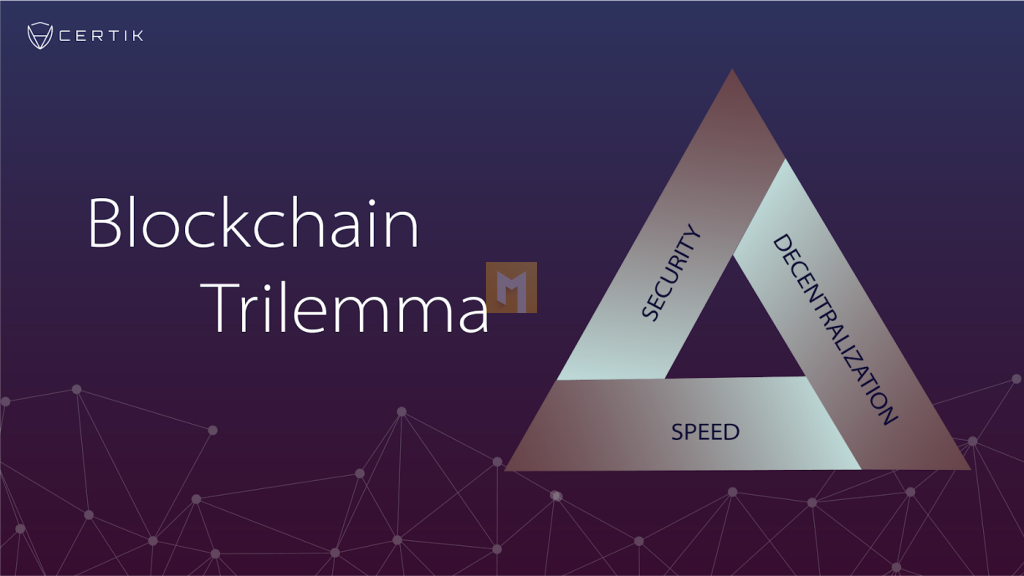
Blockchain Trilemma: Is It Inevitable with Blockchain?
Blockchains can process limited transactions in one second. For example, the Bitcoin network can handle around 7 transactions per second. The world is eagerly awaiting the adoption of Blockchain technology in mainstream applications and this transaction restriction hinders the global adoption as it is supposed to be much more efficient. For example, if Blockchain technology is adopted globally, more people should be able to access the internet without delay. However, decentralized networks are basically designed in such a way that the scalability of the network tends to weaken the security or decentralization of the network. Known as Blockchain Trilemma, developers around the world are experimenting with different scalability solutions and consensus mechanisms, including sharing and spatial channels.
Introduction
Blockchain is a decentralized digital database made up of blocks of data arranged in chronological order. These blocks of data are secured with cryptographic proofs and linked together. Blockchain technology has been adopted across various industries to replace traditional data management and storage solutions with better security. The idea behind secure, decentralized blockchains is to create an infrastructure that doesn’t rely on intermediaries to function properly through third parties. When it comes to the worldwide use of Blockchain technology, experts believe it is impossible to create a Blockchain network that offers all three elements: security, decentralization, and scalability. This article highlights some of the best solutions created by Blockchain developers from around the world to solve this Blockchain trilemma and create a Blockchain network that provides the architecture with optimal security, scalability and decentralization.
What is organizational decentralization?
Blockchain networks, like Bitcoin, are designed to be so decentralized that there is no central authority, organization, or agency responsible for operating the network. The network layer is available to anyone who wants to participate in the Blockchain. Thus, control of the network is fully decentralized among the participants rather than a single entity. All members of the Blockchain have access to the data in the chain and if someone tries to change the activity or registers to cheat, the participants have the right to vote to reject the data deemed to be faulty. Let’s take the example of the Bitcoin network to avoid the technicalities of understanding decentralized architecture. No third party controls the Bitcoin network, unlike the traditional financial system of traditional banks. A third-party audit log ensures that the data is handled correctly and that the parties involved in the transaction keep their data securely.
On the other hand, Bitcoin Blockchain offers all members of the chain access to the data and the transaction records are cross-checked before these records are added to the digital database. In this way, Blockchain technology creates a system without intermediaries to manage the network and strengthen trust between participants. However, transaction time increases in Blockchain networks as all participants in the chain perform data validation and can sometimes be slow due to the way data is processed and shared in Blockchain. Let’s try to understand how Blockchain provides the best data security and why Blockchain data security is at risk as we scale the network.
How Does Blockchain Provide Best-in-Class Data Security?
In terms of security, it doesn’t matter if Blockchain is decentralized; if it doesn’t provide good security. A blockchain network is considered a good network if it is able to resist malicious parties and attacks on the information available in the chain. Unlike a centralized system, which achieves system security by shutting down the system and restricting access to data to central authorities only, the Blockchain network allows access to all members of the chain. The biggest challenge for blockchain developers is to create a decentralized system with optimal information security when all members of the chain participate in the decision-making process. Let’s go back to the Bitcoin Blockchain example to understand how Blockchain offers the best security with decentralized systems. The Bitcoin Blockchain operates on a combination of cryptography and a consensus mechanism known as proof-of-work. When we talk about the technical details of encryption, each block of data has a unique digital signature called a hash. These data blocks are linked, so if a participant tries to tamper with them, he will change the digital signature of the block. Other network participants would quickly recognize the change. Proof-of-concept consensus mechanism helps secure the cryptocurrency ledger.
If you’re wondering what a consensus mechanism is, look for our Blockchain Expert certification, which provides an in-depth, technical understanding of Blockchain fundamentals.
Note that the network becomes more secure by increasing the number of network participants and sharing power among them. The more participants there are, the more difficult it will be for the participant to master the activity. This brings us to 51% attack. It refers to a state in which a single entity or a group of participants controls more than 50 percent of the total hash rate of the chain network, can take over the consensus mechanism, and is called overwhelming consensus. benefits such as double use of tokens. In conclusion, we can say that security is still the basic requirement for a successful Blockchain as it would be useless if anyone on the chain could change the information on the chain for their own benefit.
How to solve the Blockchain Trilemma?
Blockchain developers are working hard to solve the Blockchain trilemma by applying various consensus mechanisms to the Blockchain network. The community has seen different approaches from Blockchain developers produce interesting results. Let’s take a look at some of the most popular techniques used by Blockchain developers to address the Blockchain trilemma.
Conclusion
Blockchain technology is still in its infancy and several aspects need to be addressed before it can be adopted as a mainstream technology worldwide. However, the demands from blockchain developers have grown exponentially in recent years and are expected to skyrocket in the near future. If you are looking for the best Blockchain certification to develop yourself, Blockchain Council offers the best Blockchain courses that provide an in-depth understanding of Blockchain technology concepts.
